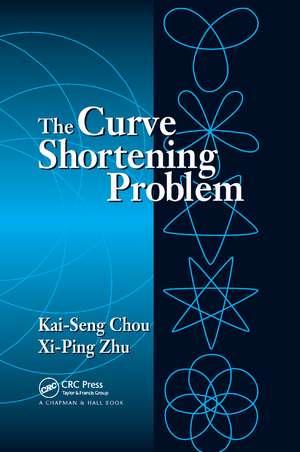The Curve Shortening Problem
Autor Kai-Seng Chou, XI-Ping Zhuen Limba Engleză Paperback – 5 sep 2019
The authors present a complete treatment of the Gage-Hamilton theorem, a clear, detailed exposition of Grayson's convexity theorem, a systematic discussion of invariant solutions, applications to the existence of simple closed geodesics on a surface, and a new, almost convexity theorem for the generalized curve shortening problem.
Many questions regarding curve shortening remain outstanding. With its careful exposition and complete guide to the literature, The Curve Shortening Problem provides not only an outstanding starting point for graduate students and new investigations, but a superb reference that presents intriguing new results for those already active in the field.
Preț: 486.31 lei
Preț vechi: 572.12 lei
-15% Nou
Puncte Express: 729
Preț estimativ în valută:
93.07€ • 96.80$ • 76.83£
93.07€ • 96.80$ • 76.83£
Carte tipărită la comandă
Livrare economică 14-28 aprilie
Preluare comenzi: 021 569.72.76
Specificații
ISBN-13: 9780367397531
ISBN-10: 0367397536
Pagini: 272
Dimensiuni: 156 x 234 x 18 mm
Greutate: 0.37 kg
Ediția:1
Editura: CRC Press
Colecția Chapman and Hall/CRC
ISBN-10: 0367397536
Pagini: 272
Dimensiuni: 156 x 234 x 18 mm
Greutate: 0.37 kg
Ediția:1
Editura: CRC Press
Colecția Chapman and Hall/CRC
Cuprins
Basic Results. Invariant Solutions for the Curve Shortening Flow. The Curvature-Eikonal Flow for Convex Curves. The Convex Generalized Curve Shortening Flow. The Non-Convex Curve Shortening Flow. A Class of Non-Convex Anisotropic Flows. Embedded Closed Geodesic on Surfaces. The Non-Convex Generalized Curve Shortening Flow. Bibliography.
Descriere
The curve shortening flow and other closely related geometric evolution equations serve as mathematical models for applications in diverse areas, such as phase transitions, flame front propagation, chemical reaction, mathematical biology, and image processing. The first book dedicated to this subject, The Curve Shortening Problem presents a rigorous, comprehensive account of the fundamental results relevant to these flows. With its careful exposition and complete guide to the literature, this book provides both an outstanding starting point for graduate students and a superb reference with intriguing research results for those already active in the field.
